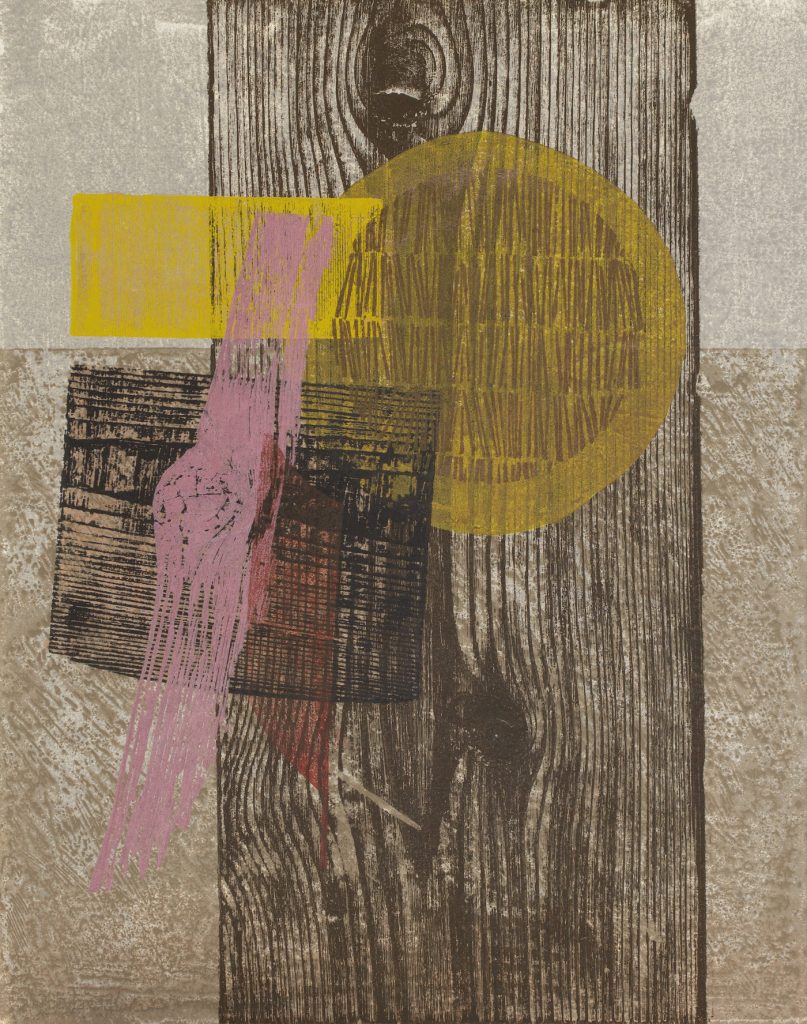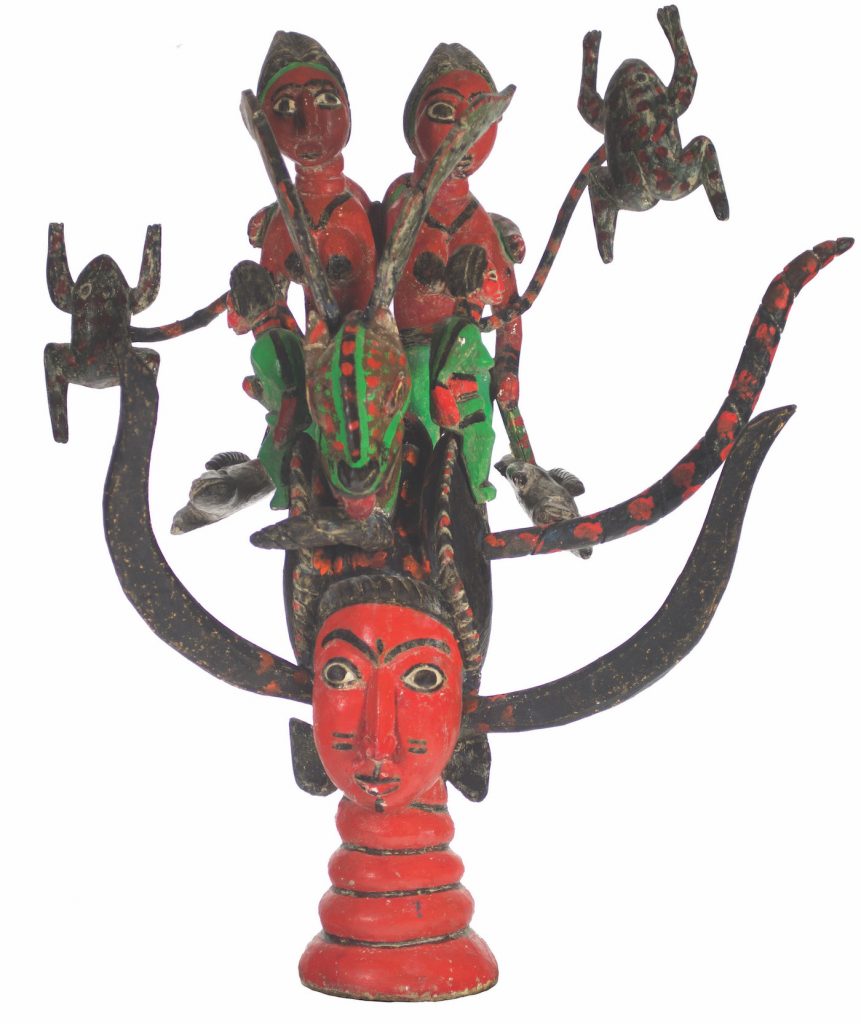Surprise Summer Exhibit Features New Gifts

The Westmont Ridley-Tree Museum of Art is showing off its newest treasures this summer in “The Recent Acquisitions to the Permanent Collections,” through early August. The museum is open Monday through Friday from 10 am to 4 pm and closed weekends and college holidays during the summer. For more information, please visit westmont.edu/museum or contact the museum at (805) 565-6162.
The impromptu exhibition highlights art added to the museum’s collection in the last few years, including works by Pablo Picasso, Joan Miró, Marcos Ramírez ERRE, Narcisse Virgile Díaz De La Peña, as well as from the Fima and Jere Lifshitz African collection.
“We have benefited from several amazing donations in the past two years, including the Lifshitzes who have graciously lent highlights from their African collection for an exhibition, and then donated 54 works to the collection,” says Judy L. Larson, R. Anthony Askew professor of art history and museum director.
Other donations include Pablo Picasso and Joan Miró prints from the Galerie Michael in Beverly Hills. “The Galerie introduced us to Greg Scott, who donated late 19th and early 20th century French paintings by Narcisse Virgile Díaz De La Peña, Henri Joseph Harpignies and Gabrielle Achenbach,” Larson says. “Through them we also met Norman Hames, who gifted the museum two of Picasso’s canceled copper plates and corresponding prints, and Angela Yadegar, who gave us what is likely an etched portrait of Rembrandt’s father.”

Nancy and Carter Freeman gave the museum a landscape by noted French artist, Leon Victor Dupré.
Santa Barbara-area museum professionals Brian Stenfors and Robert Henning, who are helping the museum build a drawing connoisseurship collection, have donated European drawings that present issues about style, attributions and processes. “Students will be able to study these works to better understand how art scholars determine authenticity and quality,” Larson says.
R. Anthony and Barbara Askew donated works by R. Anthony as well as two prints by Siu Zimmerman, a retired Westmont art professor. The Santa Barbara Library gave the museum a rare painting by Paul Perlmutter, an early modernist in Santa Barbara’s art history.
The exhibition highlights many great works donated from the estate of Fran and Keith Puccinelli, Georgia artist Howard Finster, and Carpinteria modernist Jens Pedersen. Bonnie Baas donated a sculpture by Jill Vanderhoof, a former Westmont sculpture professor.
The Westmont Acquisition Fund helped the museum purchase three works by Marcos Ramírez ERRE and Andrea Bowers, which address the immigration issue, and the Dewayne and Faith Perry Print Acquisition Fund aided in the acquisition of an etching and aquatint by Judy Pfaff.
The museum will kick off the fall with “Spontaneous Response: The Innovative Ceramics of Don Reitz” from August 29 to November 9 with an opening reception on Thursday, August 29, from 4-6 pm.
CATLab Students Collaborate to Innovate
Fifteen high-achieving Westmont students, working closely with college staff this summer at Westmont Downtown (26 West Anapamu Street), are solving some of the most daunting challenges confronting the college’s admissions, advancement, and information technology departments. Through this unique initiative of the Center for Applied Technology known as CATLab, students code, post, write, network and serve. This summer, CATLab is overhauling the admissions data system, allowing more personalized relations with prospective students and integrating admissions with advancement services.
Last summer, a pilot team of seven students created software for the college’s advancement services, developing add-on applications to Salesforce that dramatically improved the donor relations, donor tracking, and fundraising systems.
At the end of every summer, CATLab hosts a tech-focused leadership conference, Enabling Impact. Last year, Westmont students presented a thoughtful and impressive advancement-oriented solution built on the Salesforce platform to higher-education executive attendees from Southern California.
“We wanted a fundraising tool that was actually useful for the fundraisers and not just the back-office people who communicate with donors and keep everything organized,” said Reed Sheard, Westmont chief information officer and vice president for college advancement. “Delivery of the final product was one of the five most impressive moments I’ve witnessed in twenty years of higher education.”
Up to two days a week, students may secure a voluntary or paid internship from a tech company in town, including Appfolio and Outside Open, which provide tangible experience leading to exceptional job-market training.
The students collaborated to create a statement defining their team for the summer: “We design creative solutions to real problems and take ownership of our professional and personal development, empowering others to innovate in their own communities.”
Willis’ Essay Book Earns National Award
Paul Willis, Westmont professor of English, won the 2018 Indies Bronze and was an Indies Finalist for Autobiography and Memoir by Foreword Reviews for his collection of essays, To Build a Trail: Essays on Curiosity, Love & Wonder (WordFarm, 2018).
The Foreword Reviews, which honor the best books published by an independent press each year, previously awarded Willis the Indies Gold, Essays for “Bright Shoots of Everlastingness: Essays on Faith and the American Wild” (WordFarm, 2005).
Willis, Santa Barbara poet laureate from 2011-13, has published several collections of poetry, including Little Rhymes for Lowly Plants (White Violet Press, 2019), Deer at Twilight: Poems from the North Cascades (Stephen F. Austin State University Press, 2018), Getting to Gardisky Lake (Stephen F. Austin State University Press, 2016), Say This Prayer into the Past (Cascade Books, 2013), Rosing from the Dead (WordFarm, 2009), and Visiting Home (Pecan Grove Press, 2008). With David Starkey, he co-edited In a Fine Frenzy: Poets Respond to Shakespeare (University of Iowa Press, 2005). He has published numerous poems in journals such as Poetry, Ascent, Wilderness, and Christian Century.
In 2010, he published a revised version of his first novel, No Clock in the Forest, together with three sequels, in a single book, The Alpine Tales.
He graduated from Wheaton College, earned a doctorate in English at Washington State University, and has taught at Westmont since 1988.







You must be logged in to post a comment.